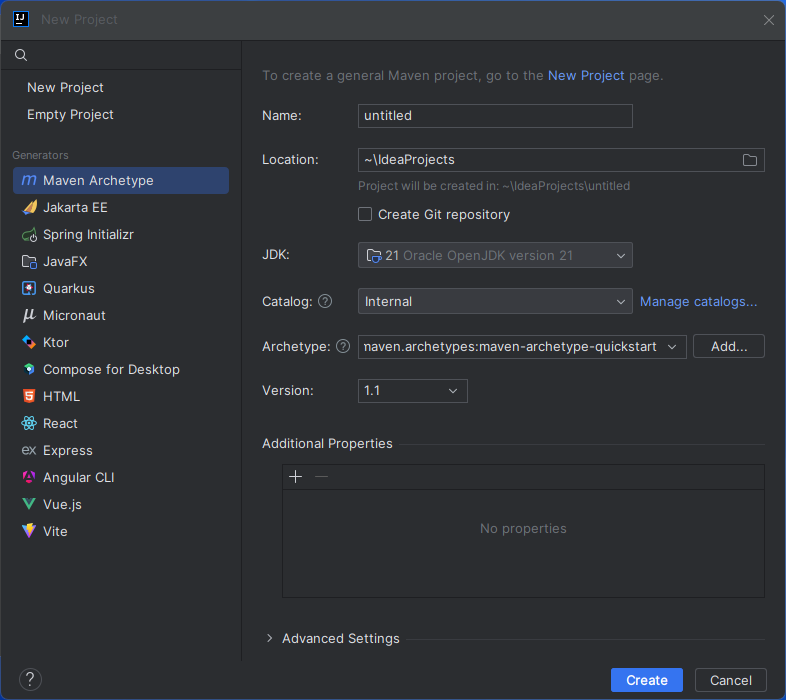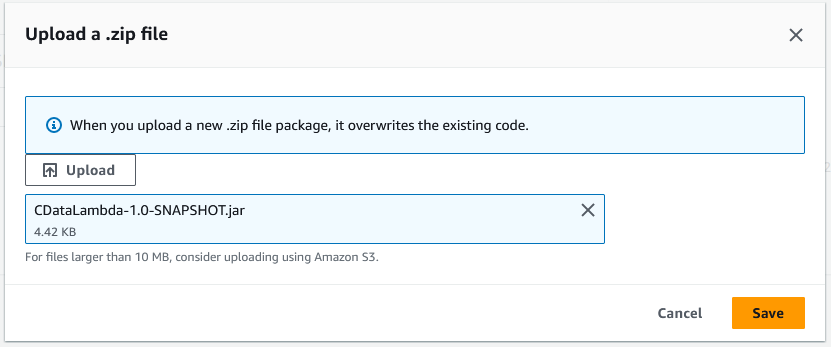Discover how a bimodal integration strategy can address the major data management challenges facing your organization today.
Get the Report →Access Live TaxJar Data in AWS Lambda (with IntelliJ IDEA)
Connect to live TaxJar data in AWS Lambda using IntelliJ IDEA and the CData JDBC Driver to build the function.
AWS Lambda is a compute service that lets you build applications that respond quickly to new information and events. AWS Lambda functions can work with live TaxJar data when paired with the CData JDBC Driver for TaxJar. This article describes how to connect to and query TaxJar data from an AWS Lambda function built with Maven in IntelliJ.
With built-in optimized data processing, the CData JDBC Driver offers unmatched performance for interacting with live TaxJar data. When you issue complex SQL queries to TaxJar, the driver pushes supported SQL operations, like filters and aggregations, directly to TaxJar and utilizes the embedded SQL engine to process unsupported operations client-side (often SQL functions and JOIN operations). In addition, its built-in dynamic metadata querying allows you to work with and analyze TaxJar data using native data types.
Gather Connection Properties and Build a Connection String
Download the CData JDBC Driver for TaxJar installer, unzip the package, and run the JAR file to install the driver. Then gather the required connection properties.
To authenticate to the TaxJar API, you will need to first obtain the API Key from the TaxJar UI.
NOTE: the API is available only for Professional and Premium TaxJar plans.
If you already have a Professional or Premium plan you can find the API Key by logging in the TaxJar UI and navigating to Account -> TaxJar API. After obtaining the API Key, you can set it in the APIKey connection property.
Additional Notes
- By default, the CData connector will retrieve data of the last 3 months in cases where the entity support date range filtering. You can set StartDate to specify the minimum creation date of the data retrieved.
- If the API Key has been created for a sandbox API account please set UseSandbox to true, but not all endpoints will work as expected. For more information, refer to the TaxJar developer documentation.
NOTE: To use the JDBC driver in an AWS Lambda function, you will need a license (full or trial) and a Runtime Key (RTK). For more information on obtaining this license (or a trial), contact our sales team.
Built-in Connection String Designer
For assistance constructing the JDBC URL, use the connection string designer built into the TaxJar JDBC Driver. Double-click the JAR file or execute the jar file from the command line.
java -jar cdata.jdbc.taxjar.jar

Fill in the connection properties (including the RTK) and copy the connection string to the clipboard.
Create a Project in IntelliJ
- In IntelliJ IDEA, click New Project.
- Select "Maven Archetype" from the Generators
- Name the project and select "maven.archetypes:maven-archetype-quickstart" Archetype.
- Click "Create"
![]()
Install the CData JDBC Driver for TaxJar JAR File
Use the following Maven command from the project's root folder to install JAR file in the project.
mvn install:install-file -Dfile="PATH/TO/CData JDBC Driver for TaxJar 20XX/lib/cdata.jdbc.taxjar.jar" -DgroupId="org.cdata.connectors" -DartifactId="cdata-taxjar-connector" -Dversion="23" -Dpackaging=jar
Add Dependencies
Within the Maven project's pom.xml file, add AWS and the CData JDBC Driver for TaxJar as dependencies (within the <dependencies> element) using the following XML.
- AWS
<dependency> <groupId>com.amazonaws</groupId> <artifactId>aws-lambda-java-core</artifaceId> <version>1.2.2</version> <!--Replace with the actual version--> </dependency> - CData JDBC Driver for TaxJar
<dependency> <groupId>org.cdata.connectors</groupId> <artifactId>cdata-taxjar-connector</artifaceId> <version>23</version> <!--Replace with the actual version--> </dependency>
Create an AWS Lambda Function
For this sample project, we create two source files: CDataLambda.java and CDataLambdaTest.java.
Lambda Function Definition
- Update CDataLambda to implement the RequestHandler interface from the AWS Lambda SDK. You will need to add the handleRequest method, which performs the following tasks when the Lambda function is triggered:
- Constructs a SQL query using the input.
- Registers the CData JDBC driver for TaxJar.
- Establishes a connection to TaxJar using JDBC.
- Executes the SQL query on TaxJar.
- Prints the results to the console.
- Returns an output message.
- Add the following import statements to the Java class:
import java.sql.Connection; import java.sql.DriverManager; import java.sql.ResultSet; import java.sql.ResultSetMetaData; import java.sql.SQLException; import java.sql.Statement; Replace the body of the handleRequest method with the code below. Be sure to fill in the connection string in the DriverManager.getConnection method call.
String query = "SELECT * FROM " + input; try { Class.forName("cdata.jdbc.taxjar.TaxJarDriver"); cdata.jdbc.taxjar.TaxJarDriver driver = new cdata.jdbc.taxjar.TaxJarDriver(); DriverManager.registerDriver(driver); } catch (SQLException ex) { } catch (ClassNotFoundException e) { throw new RuntimeException(e); } Connection connection = null; try { connection = DriverManager.getConnection("jdbc:cdata:taxjar:RTK=52465...;APIKey=3bb04218ef8t80efdf1739abf7257144;"); } catch (SQLException ex) { context.getLogger().log("Error getting connection: " + ex.getMessage()); } catch (Exception ex) { context.getLogger().log("Error: " + ex.getMessage()); } if(connection != null) { context.getLogger().log("Connected Successfully!\n"); } ResultSet resultSet = null; try { //executing query Statement stmt = connection.createStatement(); resultSet = stmt.executeQuery(query); ResultSetMetaData metaData = resultSet.getMetaData(); int numCols = metaData.getColumnCount(); //printing the results while(resultSet.next()) { for(int i = 1; i <= numCols; i++) { System.out.printf("%-25s", (resultSet.getObject(i) != null) ? resultSet.getObject(i).toString().replaceAll("\n", "") : null ); } System.out.print("\n"); } } catch (SQLException ex) { System.out.println("SQL Exception: " + ex.getMessage()); } catch (Exception ex) { System.out.println("General exception: " + ex.getMessage()); } return "query: " + query + " complete";
Deploy and Run the Lambda Function
Once you build the function in Intellij, you are ready to deploy the entire Maven project as a single JAR file.
- In IntelliJ, use the mvn install command to build the SNAPSHOT JAR file.
- Create a new function in AWS Lambda (or open an existing one).
- Name the function, select an IAM role, and set the timeout value to a high enough value to ensure the function completes (depending on the result size of your query).
- Click "Upload from" -> ".zip file" and select your SNAPSHOT JAR file.
![Uploading the SNAPSHOT JAR file.]()
- In the "Runtime settings" section, click "Edit" and set Handler to your "handleRequest" method (e.g. package.class::handleRequest)
![Configuring the runtime handler.]()
- You can now test the function. Set the "Event JSON" field to a table name and click, click "Test"
![Viewing the results.]()
Free Trial & More Information
Download a free, 30-day trial of the CData JDBC Driver for TaxJar and start working with your live TaxJar data in AWS Lambda. Reach out to our Support Team if you have any questions.









